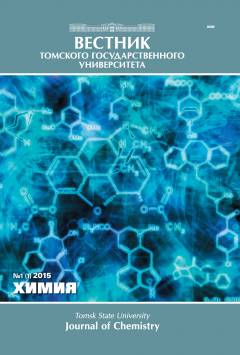Identification of the most specific volatile metabolites by gas chromatography in the exhaled breath of lung cancer patients and healthy volunteers
Bronchopulmonary diseases are the largest contributor to mortality from oncological diseases. For example, 1.5 million lung cancer cases and 1.3 million deaths worldwide from this type of cancer were identified for 2008. 84% of cases are diagnosed in the later stages, and late detection of this cancer in outpatient clinics is one of the main problems in this area. Today, non-invasive diagnosis of bronchopulmonary diseases, based on the analysis of the component composition of exhaled breath, is especially promising. In this work, most of the specific volatile metabolites were determined based on the component composition of exhaled breath using gas chromatography and mass spectrometry in conjunction with solid phase microextraction (SPME). As a result, 19 compounds were identified. Compared to the exhaled breath of healthy people, exhaled breath in lung cancer had an increased content of alkanes, such as hexane, octane, and decane, benzene derivatives, and also ethyl acetate and N-ethylformamide. Gas chromatographic analysis allows for the routine diagnosis of lung cancer, based on the study of volatile metabolites in exhaled breath. Therefore, in a clinical study, it was decided to transfer the technique for determining volatile metabolites to a gas chromatograph with a flame ionization detector using substances preconcen-trated with the SPME method, in order to reduce the cost of analysis and demonstrate the feasibility of gas chromatographic equipment in this area of research. As a result, it was found that the methylene chloride, pentane, acetonitrile, and toluene found in the exhaled breath of lung cancer patients and healthy subjects differed in the concentration of these components; therefore, as the most specific metabolites, they can be used only with the use of statistical processing techniques. O-xylene is found in all lung cancer patients, and therefore it can be used as the most specific volatile metabolite for separating lung cancer patients from healthy volunteers. The results suggest the possibility of using gas chromatography in conjunction with SPME in a clinical study the composition of exhaled breath at a level of micro-concentration-detectable substances. Quantitative determination of the volatile organic compounds in exhaled breath is possible to perform on a gas chromatograph with a flame ionization detector. Such an analysis is a relevant and promising approach to developing new methods of research and diagnostics in biomedicine and can be used to identify the disease in its early stages, predict the reaction of the organism to a particular type of treatment, and monitor the effectiveness of the therapy.
Keywords
рак легких, летучие органические соединения, метаболиты, диагностика, газовая хроматография, lung cancer, volatile organic compounds, metabolites, diagnostics, gas chromatographyAuthors
| Name | Organization | |
| Skomoroshchenko Valeriya I. | Tomsk State University | skomoroshchenko@mail.ru |
| Penkova Olga V. | Tomsk State University | olga_v_penkova@mail.ru |
| Kistenev Yuriy V. | Tomsk State University | yuk@iao.ru |
| Borisov Aleksey V. | Tomsk State University | borisov@phys.tsu.ru |
References

Identification of the most specific volatile metabolites by gas chromatography in the exhaled breath of lung cancer patients and healthy volunteers | Vestnik Tomskogo gosudarstvennogo universiteta. Chimia – Tomsk State University Journal of Chemistry. 2017. № 7. DOI: 10.17223/24135542/7/4
